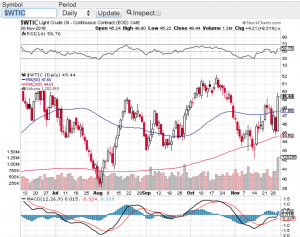New week, new record highs? The Dow Jones Industrial Average (see chart here) and the S&P 500 (see chart here) are fast approaching all-time highs. Both of these major indexes have been on a tear of late and could see new record highs this upcoming week. However, breaking news came out yesterday that Saudi Arabia has shut down half of its oil production after drones attacked the world’s largest oil processing facility. This attack will impact 5 million barrels of daily oil production. One sector that will certainly be affected is the energy space. The price of oil is now expected to skyrocket at least here in the short term. I am not sure if the markets will shrug this dynamic off, but I do expect energy stocks to outperform.
As I take a look at the Nasdaq Composite (see chart here) and the small-cap Russell 2000 (see chart here) both of these indexes appear to be ready to breakout and join the Dow Jones Industrials and the S&P 500 most recent performances. If the news out of the middle east has a negative impact on stocks, there are plenty of technical support levels that would come into play. All of the aforementioned key indexes are trading comfortably above their 20-day, 100-day and 200 day moving averages. During the month of August the 200-day moving average provided major support multiple times. As I look at the relative strength index to see how close we are to overbought conditions, there is still plenty of real estate before we see the 70 level of the RSI. So technically speaking the indexes appear to be in relatively good shape.
Without question the oil markets and the energy sector will be the focus this week. I am also curious to see how the overall markets react to this latest development out of the middle east. Good luck to all 🙂
~George
